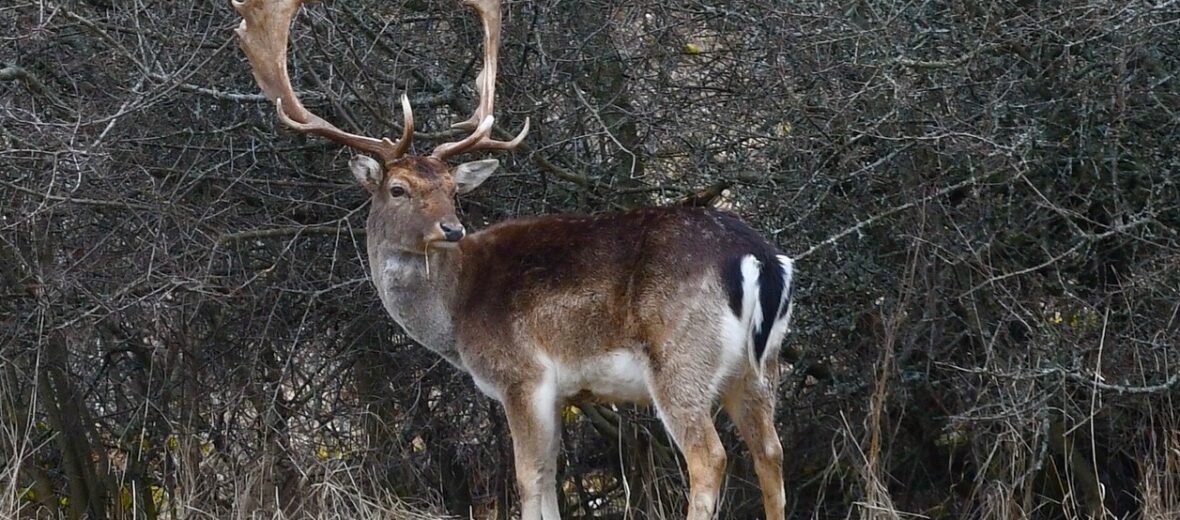
White-tailed deer are located throughout North America from southern Canada down through Central America. They inhabit most of southern Canada and all of mainland United States. They can even be found in Bolivia. White-tail deer tend to wave their tails from side to side when startled. These deer are the most popular large game for hunters in North America. An adult male deer is called a buck. The female is called a doe. A young deer is called a fawn.
First the Stats…
Scientific name: Odocoileus virginianus
Weight: Up to 300 lbs.
Length: Up to 7.2 feet
Height: Up to 3.3 feet (at the shoulders)
Lifespan: Up to 14 years
Now on to the Facts!
1.) White-tails need to eat about 7 lbs. of food per 100. lbs of body weight, per day! That’s the equivalent of an average sized man eating 11 – 13 lbs. of hamburgers!
2.) Due to their eyes sitting high on their head, they are afforded 310° vision.
3.) Deer see in what is called dichromatic vision. This is where they can only see blues and yellows. They are not able to see reds or oranges.
4.) These deer are ruminants (have a 4 chambered stomach). What other critter has a 4 chambered stomach? That’s right, a cow. They need this type of digestive system, as they eat approximately 650 different plant species!
5.) White-tailed deer have an amazing 297 million olfactory cells! To put this into perspective, humans have only 5 million. These olfactory senses help the deer to smell predators like cougars, bobcats, golden eagles, great horned owls, wolves, and hunters.
But wait, there’s more on the White-tailed deer!
6.) Deer are primarily crepuscular (active at dawn and dusk).
7.) Antlers are the fastest growing bone on earth!
Did you know…?
White-tailed deer can run up to 40 mph and can jump up to 8 feet!
8.) The velvet (the skin that covers the antlers, as they grow) sheds as soon as the antlers harden. Testosterone levels start to rise and this triggers the calcification process, thus hardening the antlers.
9.) Bucks will sometimes lose up to 30% of their body weight during rutting season.
10.) Like other deer species, the females typically give birth to one fawn the first time they become pregnant. After that, they tend to have between 2 – 3 fawns and it is not uncommon for twins or triplets to be born from different bucks.
11.) Ticks have recently been found to harbor prions of chronic wasting disease (CWD), found in white-tailed deer; among other species. See this article for more information.
Now a Short White-tailed Deer Video!
Also, check out the Critter Science YouTube channel. Videos added frequently!
Want to suggest a critter for me to write about? Let me know here.



